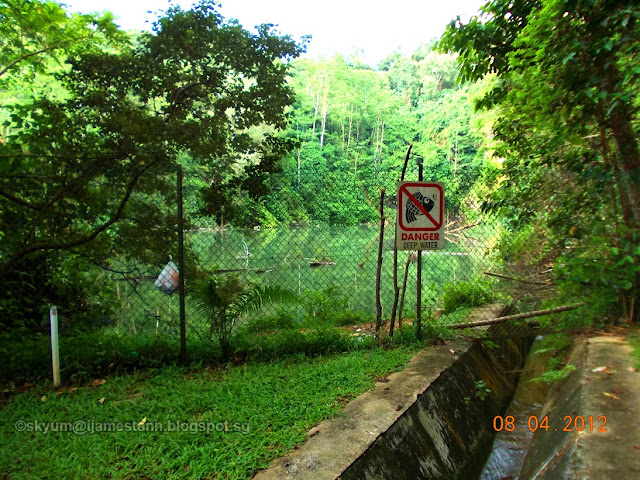He was surprised to find a lake at the top of the hill. The lake is the source where the stream flows endlessly till this day.
Here are the pictures he took of the stream and lake.
Read on further to learn some surprising facts about this lake.
My sincere thanks to Yum Shoen Keng for providing the personal photos above.
Though the lake has been there for as long as most Bukit Gombak town residents have lived there, the lake was only formed in the late 1970s.
This was when the government closed all the granite quarries in Singapore, (except for Gali Batu) and restricted quarrying offshore to Pulau Ubin.
The lake was formed when water started to fill the pit that was the old SENG CHEW Granite Quarry at Jalan Perang. It continues to fill till this day.
The stream that flows out from this lake acts as an overflow vent to drain excess water should the lake fill to the brim, which happens during intense rainfall. Otherwise, the lake is constantly fed by the natural Gombak springs.
Though not officially restricted as an out-of-bounds area, the lake is cordoned off due to the danger of sudden drop offs. NParks does not encourage visitors there as it is undeveloped with hidden dangers.
The old Jalan Perang Taoist Temple.
In the olden days, there used to be several shrines and one major Taoist temple along Jalan Perang.
The Jalan Perang Taoist temple was noted by residents near and far for its effective talismans given out at this temple. This Taoist temple also had waters springing from Bukit Gombak which were eagerly collected by worshippers for its 'magical' or spiritual qualities. This temple and all the minor shrines at Jalan Perang were demolished during the construction of Bukit Gombak New Town.
Sorry I am not able to elaborate more on the Taoist temple
(I am not taoist and depended on hearsay for info on it).
Related links:
The old Gombak Nature Trail photos
Streams at Bukit Gombak
Bukit Gombak Nature Trail article
















